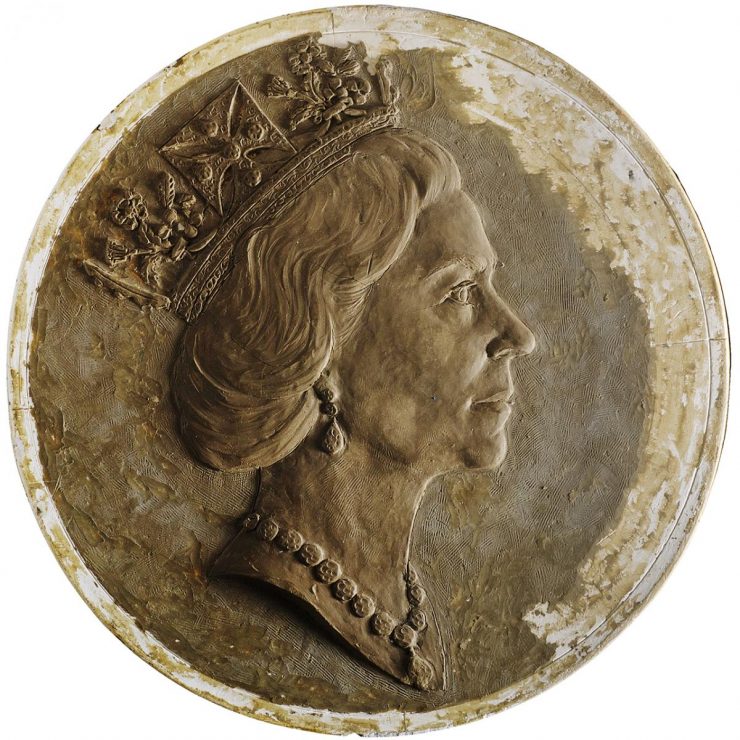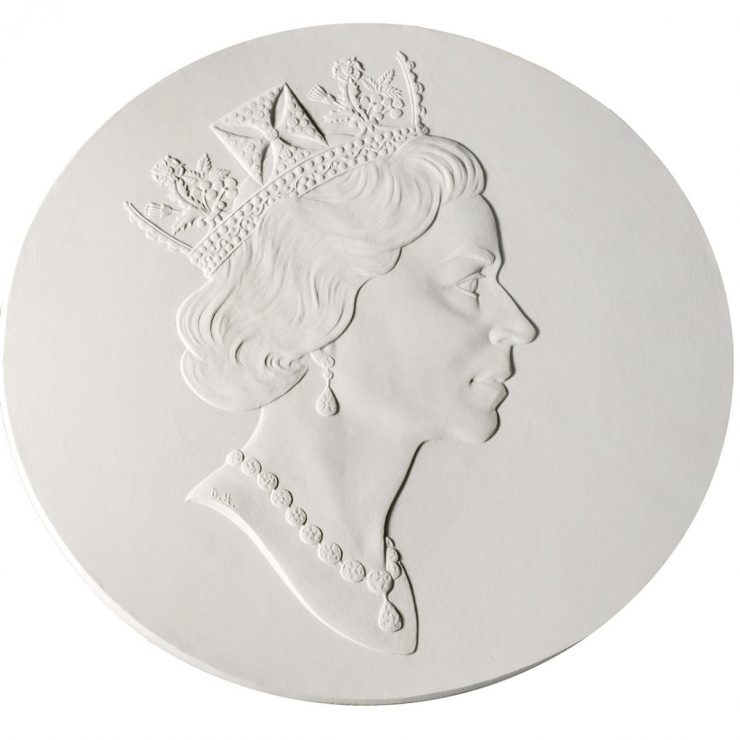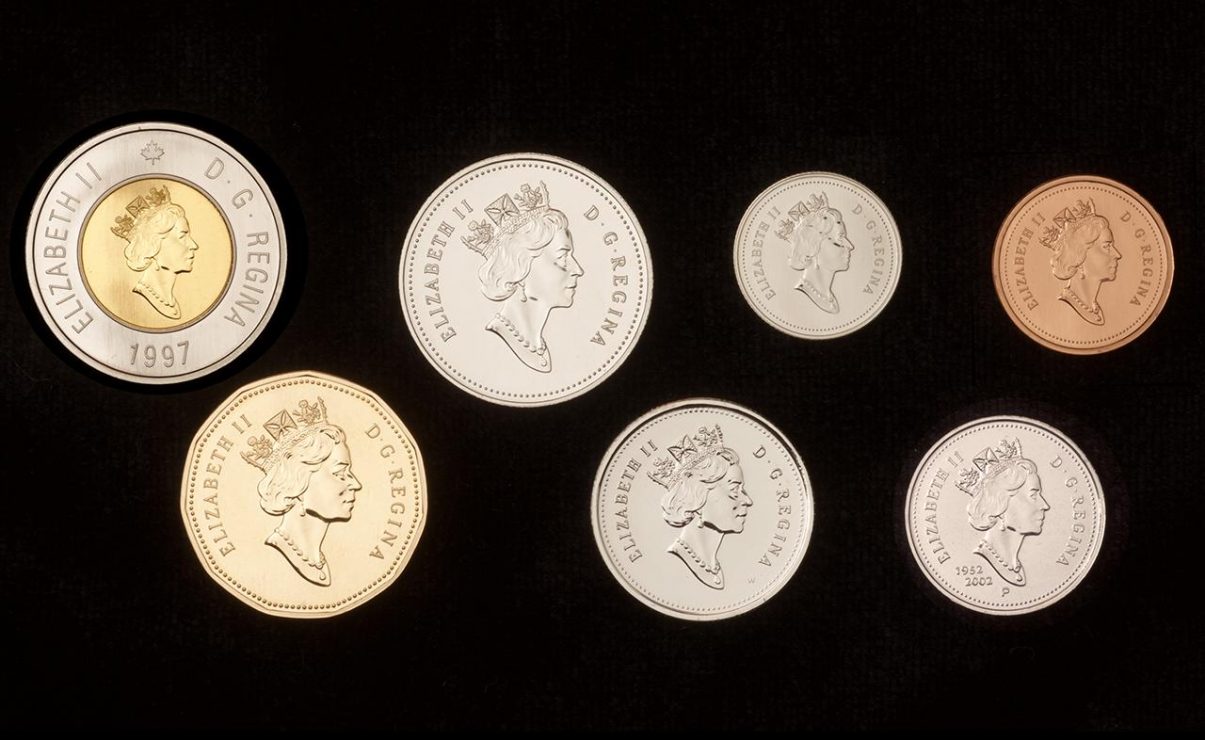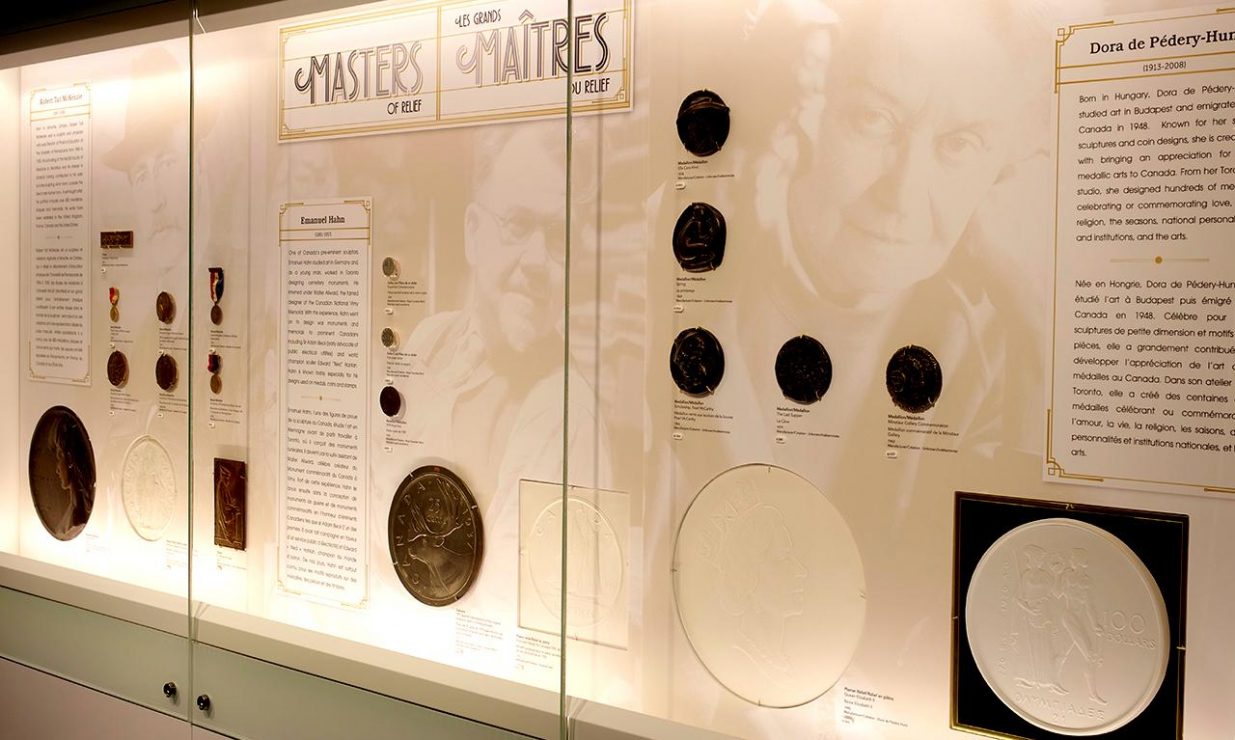Sculptor Dora de Pédery-Hunt
You will not see Dora de Pédery-Hunt’s signature on any coin, but you will see her initials on the Queen’s shoulder.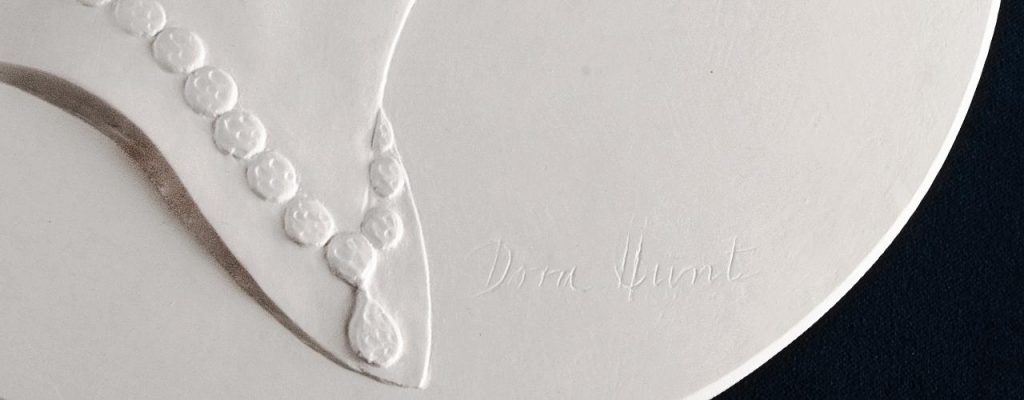
Limited Edition plaster reproduction of working model, #21 of 275. (NCC 2009.020.003)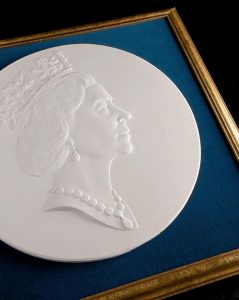
Dora de Pédery-Hunt’s work is as familiar as the change that jingles in your pocket. In all likelihood, you have come in contact with her work while using coins to pay for your morning cup of coffee. Dora de Pédery-Hunt was the first Canadian artist to design and sculpt an effigy of Queen Elizabeth II for coinage. Incidentally, this was the first time someone other than a British citizen had designed an official depiction of Queen Elizabeth II for this purpose.
When the Royal Canadian Mint (RCM) selected Dora’s design, she painstakingly began working on a clay model. All of the details had to be carefully considered, as the depth of the relief had to be suitable for producing coins. This model was then captured in plaster, where additional refinements could be made. Any errors could easily be corrected at this stage with the addition of more plaster. The size of the plaster is usually several times larger than the actual coin in order to capture all of the fine details.
At the time, there were many steps between the plaster model and the production of coins. Today, the process has been significantly refined. The plaster model is scanned in 3D and any final corrections or enhancements can be made digitally. Guided by this digital file, an engraving machine cuts the design into a piece of steel at the correct size of the coin. Known as a reduction punch, this piece of steel is then used to make the dies which will actually strike the coins. The tremendous pressure used to strike the coins wears down the dies, so the mint will periodically use the punch to create new dies.
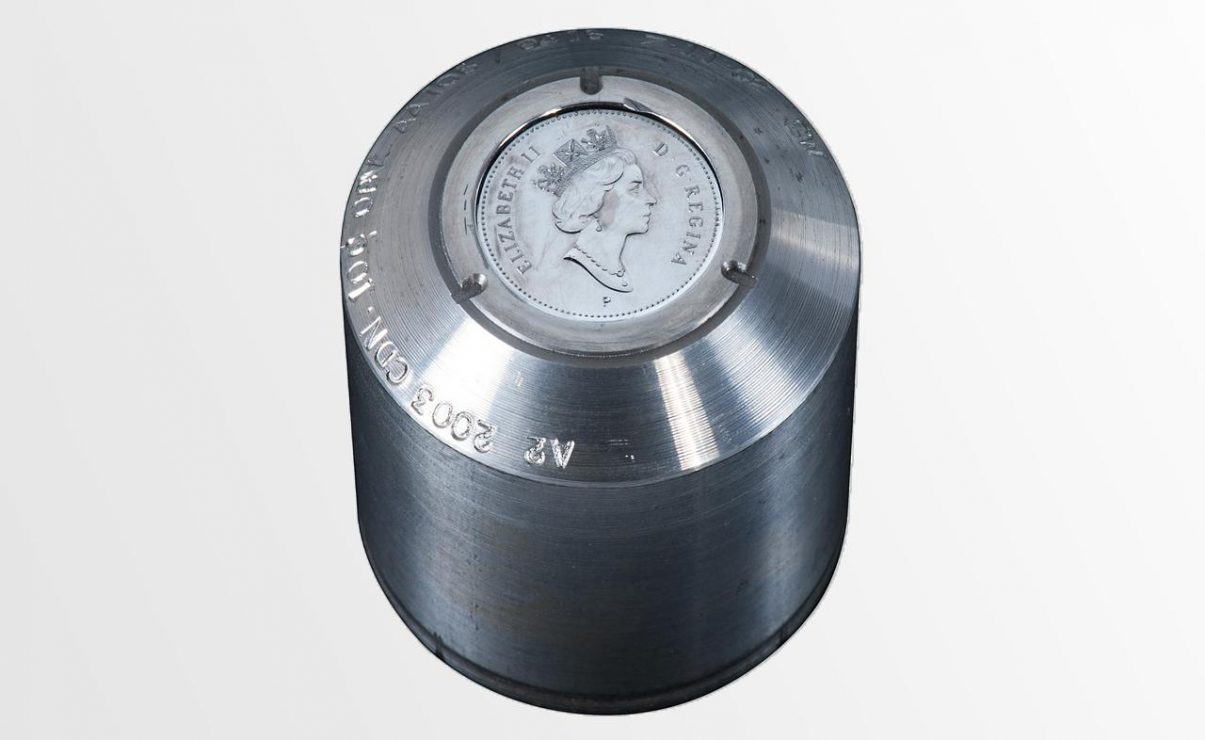
In 1999, the “P”, under the portrait on this punch, was added by the RCM to indicate a change in metal from nickel to multi-ply plated steel. (NCC 2010.058.006)
This portrait has appeared on all Canadian coins minted between 1990 and 2003.
The Museum Blog
Talk to your kids about money
Introduce important financial skills to your children, and help them plan for their futures with free resources from the Bank of Canada Museum and others.
Teaching inflation during the COVID-19 pandemic
COVID-19 has had an unprecedented effect on the economy: closing businesses, driving down demand and interrupting supplies. With news stories and popular culture addressing inflation and supply chain issues, now is the perfect time to explain this key economic concept to your high school students.
Queen of the bank notes
By: Graham Iddon
Few of us have ever met her, and it’s likely none of us are even remotely related to her. Yet, Canadians have carried her picture in their wallets for generations now. She’s Queen Elizabeth II and has been our monarch for over 70 years.
New acquisitions–2021 edition
By: David Bergeron
The Bank of Canada Museum is responsible for the National Currency Collection, and part of its mandate is to foster and develop that collection. Despite the challenges of collecting during a pandemic, curators at the Bank of Canada Museum have acquired some unique artifacts—including some that document the pandemic itself.
The true value of money
By: Graham Iddon
What is money—when you really stop to think about it? To understand how money works, and what it ultimately represents, we need to strip it down to its very basic function.
The 1911 silver dollar
By: David Bergeron
The 1911 silver dollar has a history to match its prestige, and it now has a permanent home in the National Currency Collection of the Bank of Canada Museum.
Moving mountains
By: Graham Iddon
The $20 bill of 1969 was the prototype of the Scenes of Canada note series. Yet, as more notes were designed, the theme—and the $20 note itself—would change.
